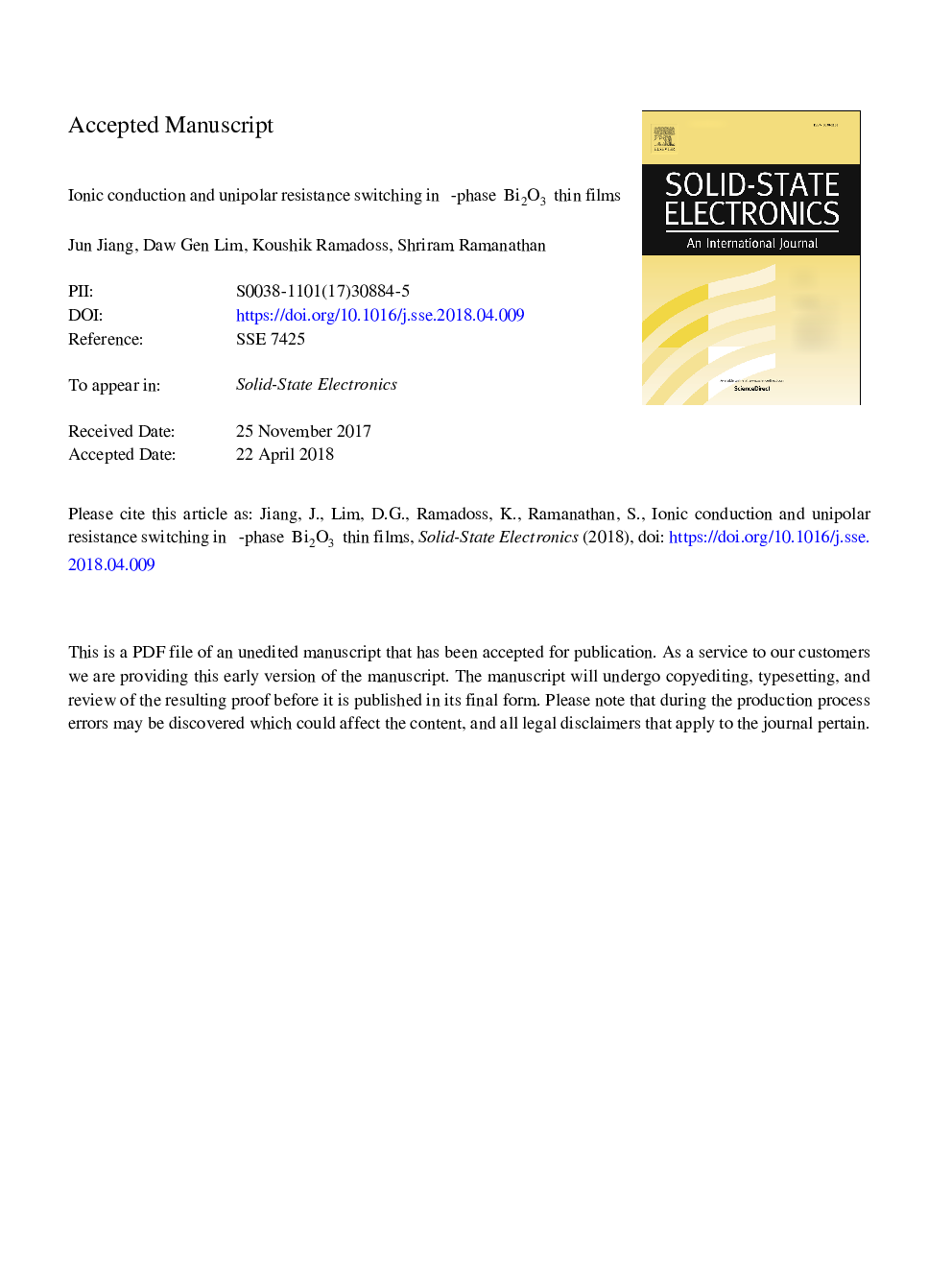| Article ID | Journal | Published Year | Pages | File Type |
|---|---|---|---|---|
| 7150236 | Solid-State Electronics | 2018 | 21 Pages |
Abstract
Fast-ion conductors are of broad interest in diverse fields such as electrochemical energy and non-volatile memory technologies. In this study, δ-phase Bi2O3 thin film was stabilized to room temperature via reactive magnetron sputter deposition and characterized by X-ray diffraction and Raman spectroscopy. The δ-phase Bi2O3 thin films were highly textured along (111) direction on various substrates and stable during annealing up to 400â¯Â°C in air and 200â¯Â°C in 5% H2 atmosphere. Electrochemical impedance measurements on δ-phase Bi2O3 thin films show an ionic conductivity of 0.001â¯S/cm at 400â¯Â°C and an activation energy of 0.98â¯eV. δ-phase Bi2O3 thin films based resistance switching cells (Ag/δ-Bi2O3/Pt or Ag/δ-Bi2O3/Au) show unipolar resistance switching phenomena. The voltage difference between the RESET and SET voltage is over 0.8â¯V and the resistance contrast between high resistance state (HRS) and low resistance state (LRS) is greater than 103. The resistance switching parameters, like FORMING voltage, SET voltage and RESET voltage can be controlled by the thickness of δ-Bi2O3. In the low resistance state, both the absence of superconductivity down to 2â¯K and magnetoresistance value indicates metallicity originates from non-stoichiometric bismuth oxide and not pure bismuth metal. The electric field required for SET and RESET operations are estimated to be 7â¯MV/m and 3.25â¯MV/m respectively.
Related Topics
Physical Sciences and Engineering
Engineering
Electrical and Electronic Engineering
Authors
Jun Jiang, Daw Gen Lim, Koushik Ramadoss, Shriram Ramanathan,
